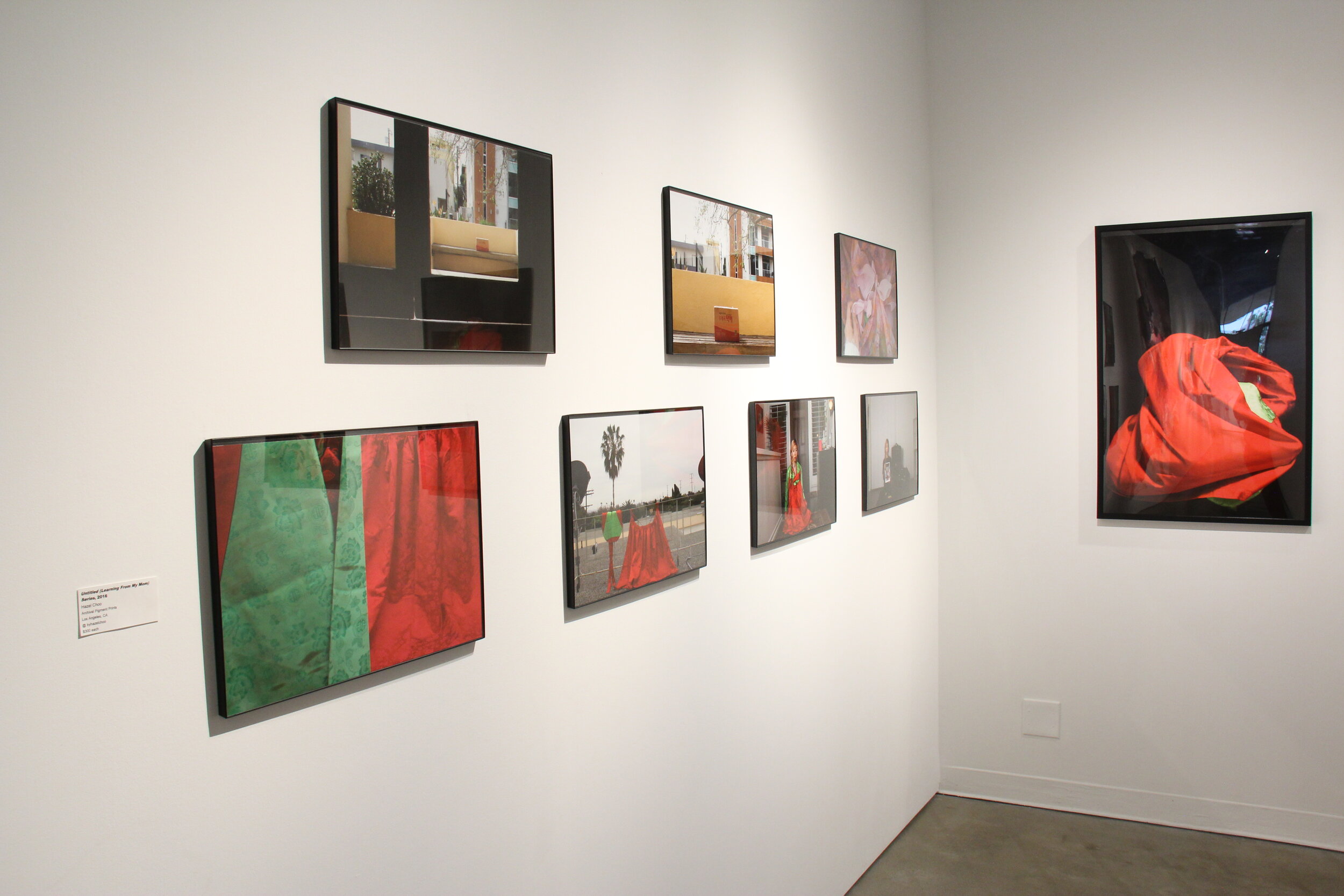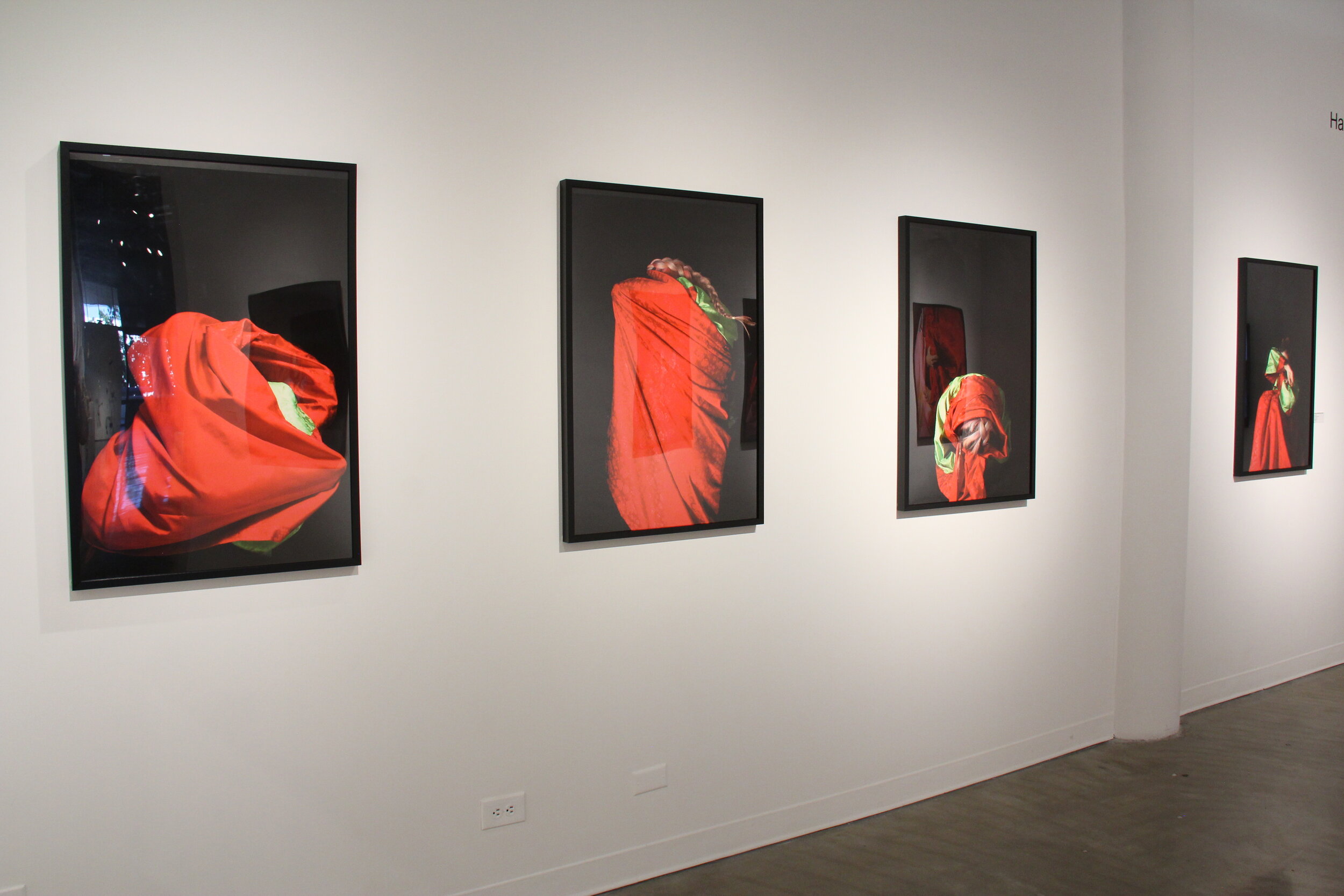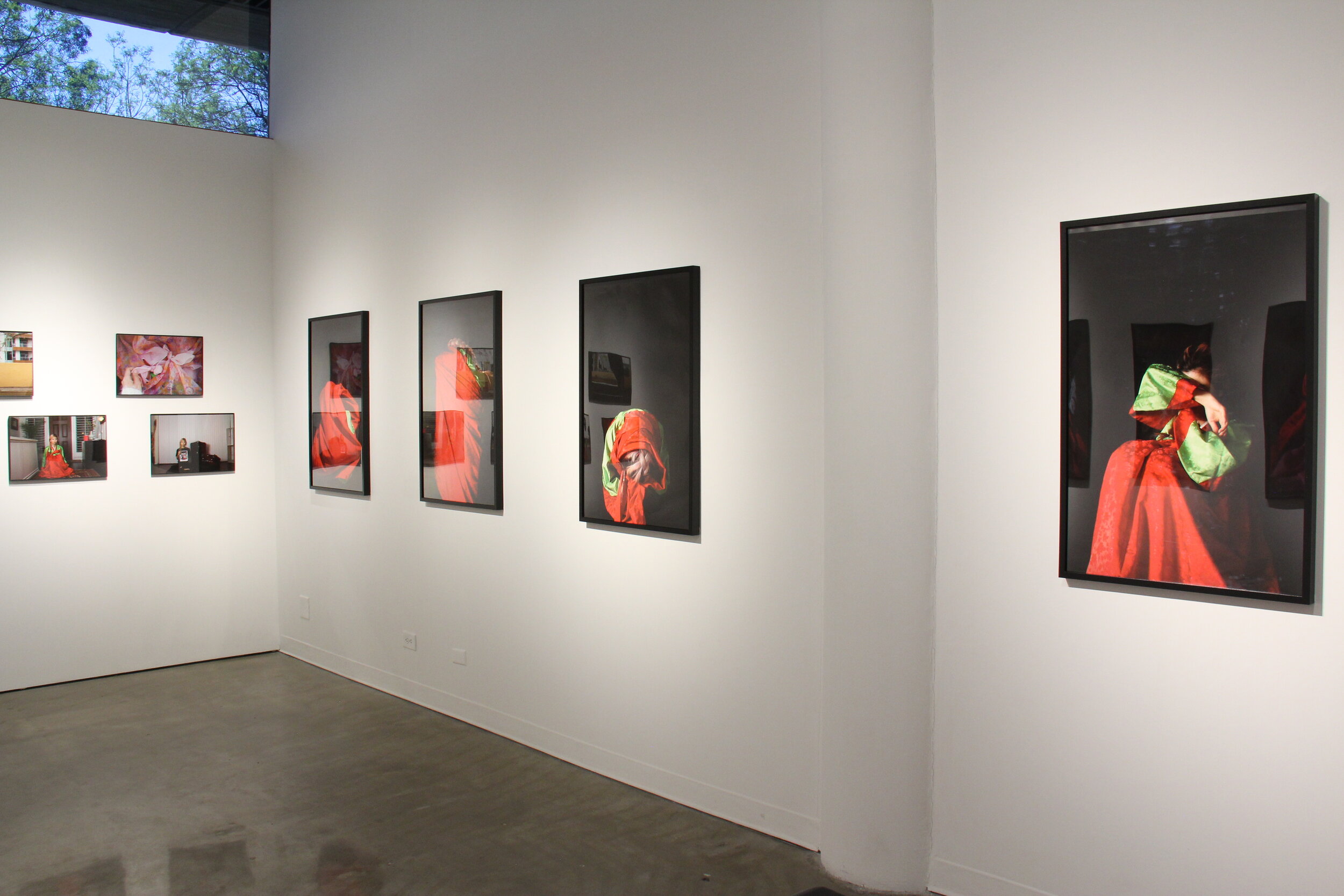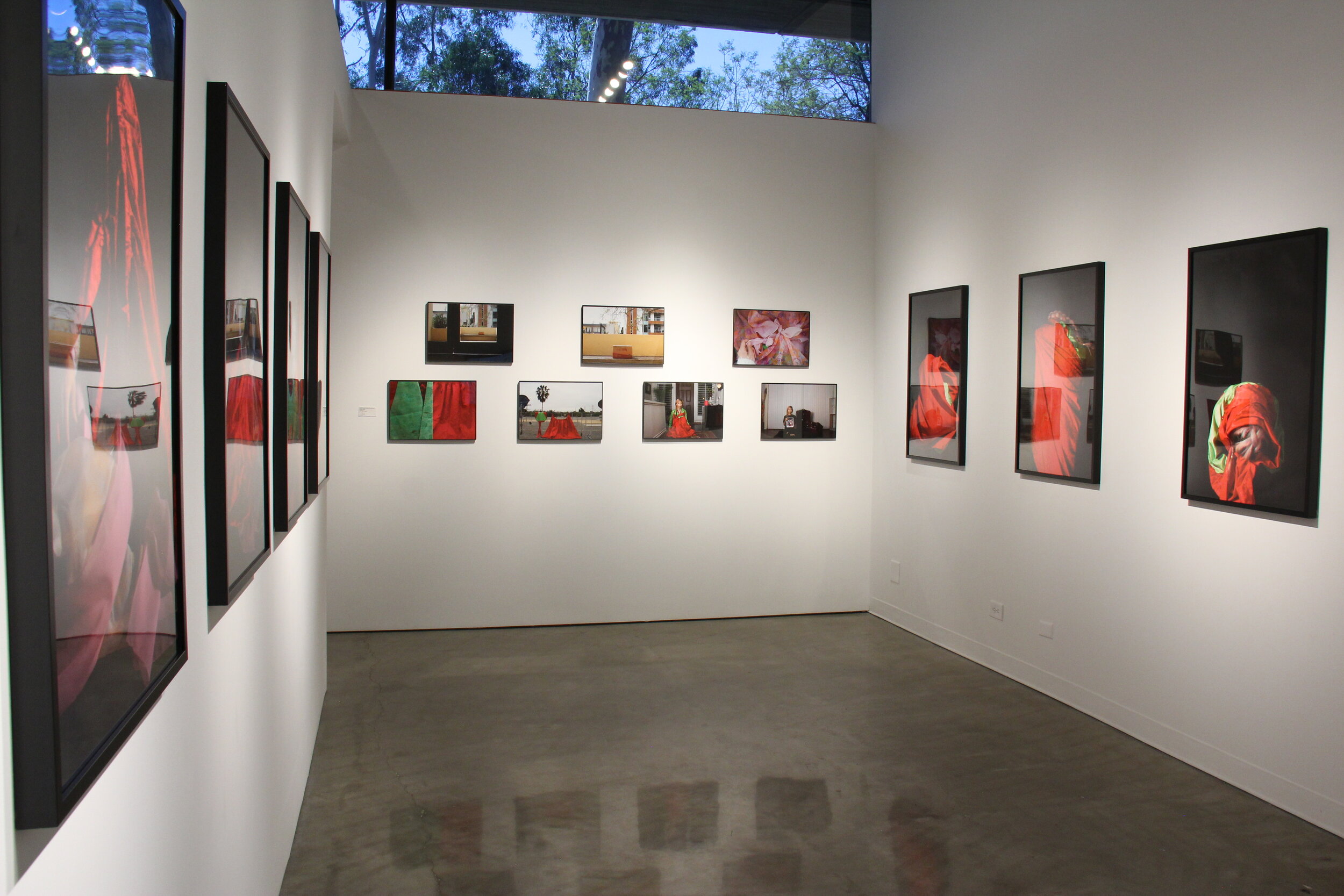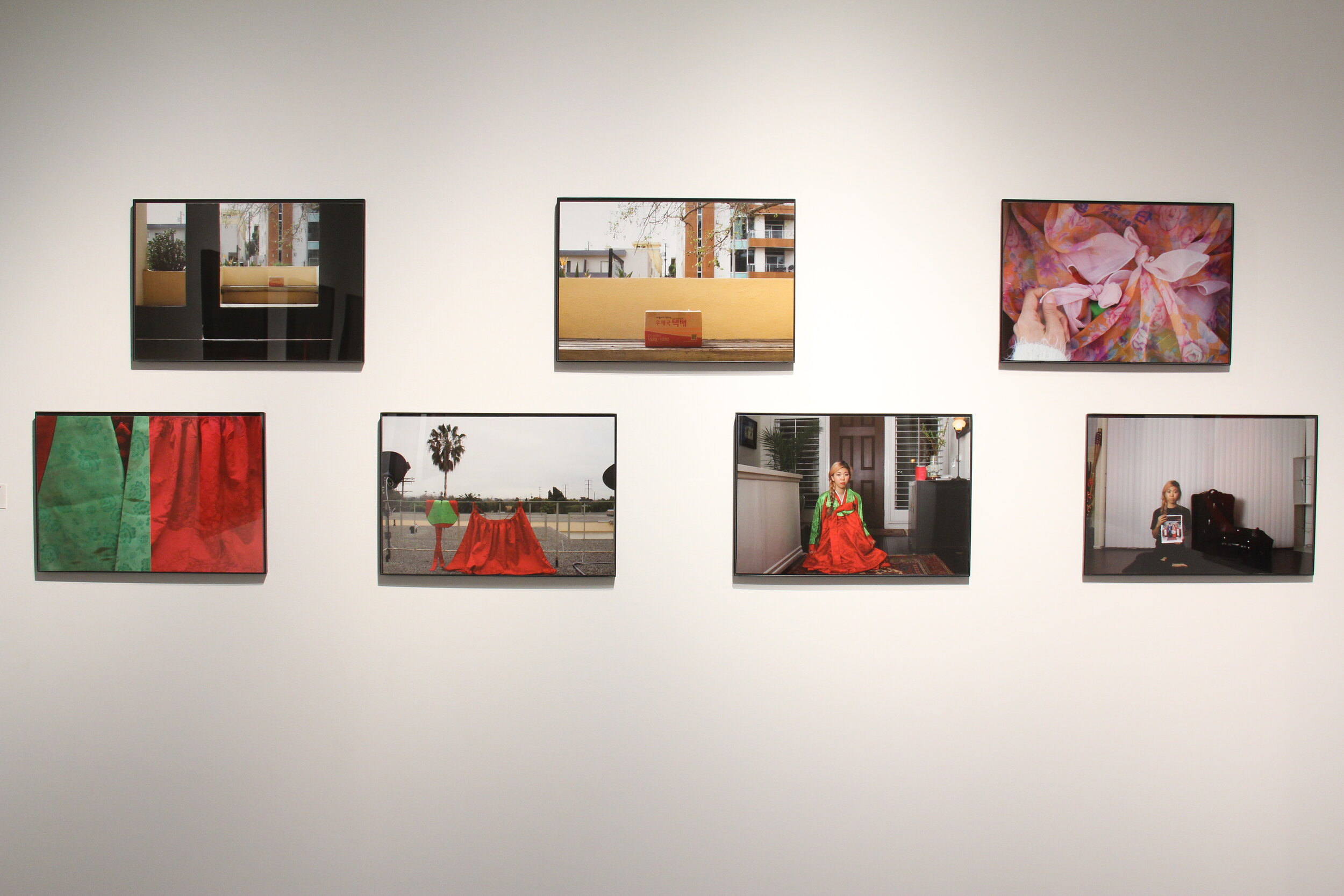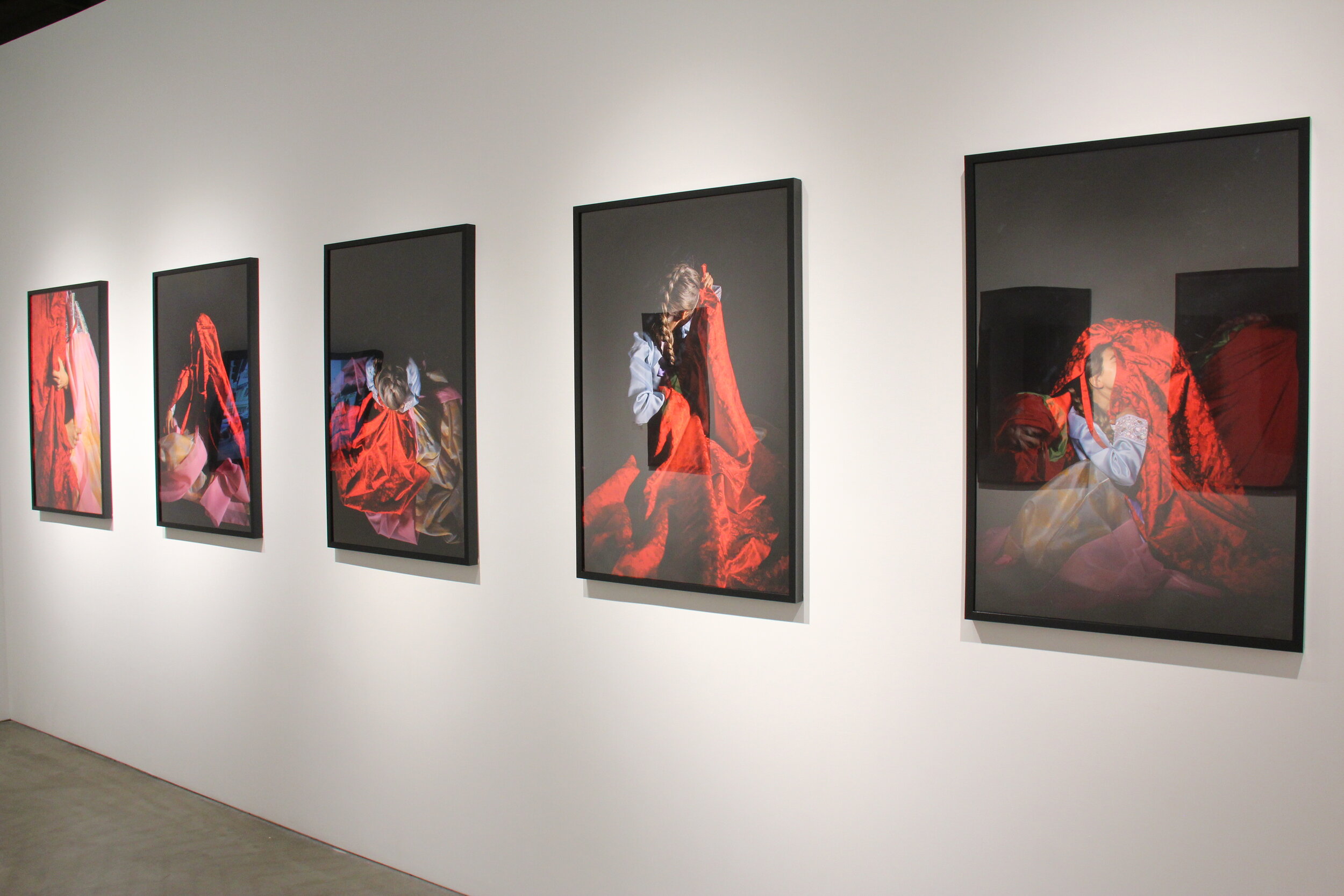Hazel Choo
Hazel Choo Artist Statement
As a temporary resident of Los Angeles, I often feel like an outsider. It has caused me to question my definition of home. Is LA home? Is my apartment home? Or is LA simply where I am for the moment? Is my apartment simply a domestic space in which I reside?
I enjoy walking through unknown areas. To experience and explore life outside of electronic devices. Through this act of "disconnecting" I've become familiar with my new home city and have particularly noticed the contrast between native Angelinos, permanent immigrants, and transitory foreigners like myself.
As I contemplate my internal and external self, I have been working on art forms which connect my identity to this notion of “place” that reflects my own struggles on being in the space between tradition and modernity. Having lived in Korea and the United States, I often find myself standing at the intersection of both cultures and I walk along one place to another; where my roots come from and where I reside now.
Several years ago, I asked my mother to send her traditional Korean dress (which is called “Hanbok“) to California from my motherland, Korea. It was handmade in 1981 and worn once by my mother for her wedding. After receiving the Hanbok from my mother, my art journey turned to exploring my identity in depth – as a traditional and contemporary Korean woman in Los Angeles.
In the first series of self-portraits, Untitled (learning from my mom) (2016), as I unwrapped a Bojagi, a traditional Korean wrapping cloth, it felt like unfolding stories of my mother and what she went through with all social pressures and burdens as a woman in Korea when she was at my age.
The abstract form and position of my body merges with the red fabric Hanbok – The body fades to the black background. The portrait photograph is from a series of images which express a clash between my contemporary identity and traditional Korean cultural identity in Untitled (1981/2016) (2016), Untitled (1981/2017/2020), (2020).
For the second series of self-portraits, Untitled (1981/2017/2020), (2020), I wore my sister’s Hanbok. She was the first one of our family who came to America by herself about two decades ago. She received this Hanbok custom made in Los Angeles as a gift for her wedding in 2017. I am wearing her contemporary Hanbok and reflecting on being the first Korean generation in America. Also, using our mother’s Hanbok simulates a butterfly’s cocoon and shelter.
Similarly, for me the Hanbok represents a refuge and haven from my internal struggle with duality – the pull of my traditional Korean roots and my new identity as a “foreigner” in Los Angeles, California.
In You, Me, and Angelenos (2016), a video of a performance held in Koreatown, Los Angeles, I walk into the crowd and stand still for over 3 hours in the middle of the street with passersby walking around me. I heighten the viewer’s awareness of my existence. While I was performing, I had to maintain great control to remain as still as possible. I claimed the space and embodied the traditional heritage and modern identity—making people question as they interact or acknowledge the existence or non-existence of the artist.
I have been exploring my location and placement in Los Angeles to make various works of self-portraiture. Being a Korean citizen and a temporary resident of the city, I have a unique perspective carrying my own identity in which I am neither a native nor a permanent immigrant. I often feel that I am at the intersection of several identities.
Watch Hazel discuss her art, background, and practice.

